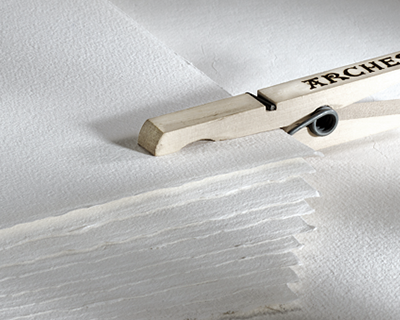I print most of my work in my Kaua`i studio. I use a platinum printing process which allows me to create prints that contain graduated, subtle tones. I ft use platinum in combination with palladium in order to create a variety of tones from very cool ranging to neutral and very warm tones. At times, especially when working on my large format installations, I experiment with different metals, temperatures, deconstructed negatives, and a variety of alternative techniques.
Recently, I have been printing large prints, up to 72x40 inches, on delicate Japanese paper Haini Kozo 65 gsm. I use the juice from my own Tahitian lime tree to “break” the paper’s surface as I hand coat it. To be able to print such a large format, a part of my studio is set outdoors. So, the prints do get unintentional organic matter mixed in with precisely measured chemistry; all simply a part of the environment I practice in.
I also use paper from two historic mills: Arches Platine 310 gsm made in France and 300 gsm Revere Platinum paper created by Magnani paper mill in Italy. This mouldmade paper is manufactured from 100% cotton, but unlike most other archival fine art, has NO buffering alkaline agents (i.e. calcium carbonate) added during the paper-making process and little to no iron content. The paper prints extremely well, displaying rich, even tonality and deep blacks.
-- Bruna Stude




PLATINUM + PALLADIUM PROCESS
Unlike the silver print process, platinum lies on the paper surface, while silver lies in a gelatin or albumen emulsion that coats the paper. As a result, since no gelatin emulsion is used, the final platinum image is absolutely matte with a deposit of platinum (and/or palladium, its sister element which is also used in most platinum photographs) absorbed slightly into the paper.
By varying the amount of platinum vs palladium and the addition of oxidizing chemicals such as hydrogen peroxide and potassium dichromate or potassium chlorate, the contrast and "color" of the final image can be modified. Because of the non-uniformity of the coating and mixing phases of the process, no two prints are exactly the same, adding additional "cachet" to a platinum print.
Due to the unavailability of pre-coated sensitized paper, all platinum/palladium printing is done on paper hand-coated by the printmaker. The light sensitive chemicals are mixed from powdered basic chemicals, or some commercially available solutions, then hand applied with a brush or a cylindrical "pusher".
HISTORY
In 1873, thirty-four years after Louis Daguerre in Paris and William Henry Fox Talbot in London presented the discovery of photography to the world, the platinum process of printing photographs was patented.
Since that time, platinum's use in photography has had an almost unbroken continuity to the present day—being interrupted only by the World Wars. At the outbreak of World War I, platinum abruptly could no longer be obtained. Russia had almost 90 percent of the world's supply; and what little platinum was available went into strategic needs of the war. When peace was won, and as the world returned to normal, platinum was prominently resurrected by Alfred Stieglitz, who printed mostly on platinum and palladium papers. Platinum was also preferred by his young protégés Paul Strand and Clarence White. Edward Weston used platinum and palladium papers throughout his early, greatest period; Edward S. Curtis, Irving Penn, Manuel Alvarez Bravo and most of the greats in the history of photography have all produced perfect, beautiful images in platinum.